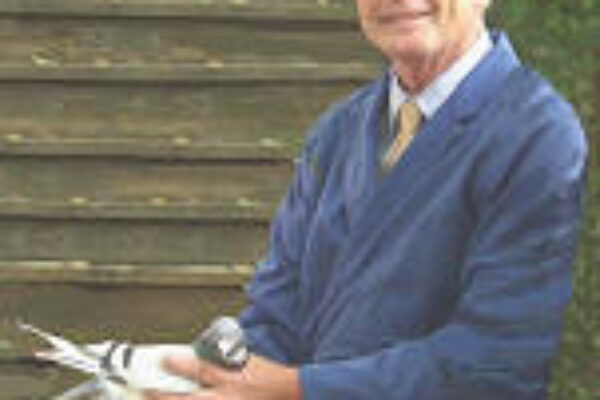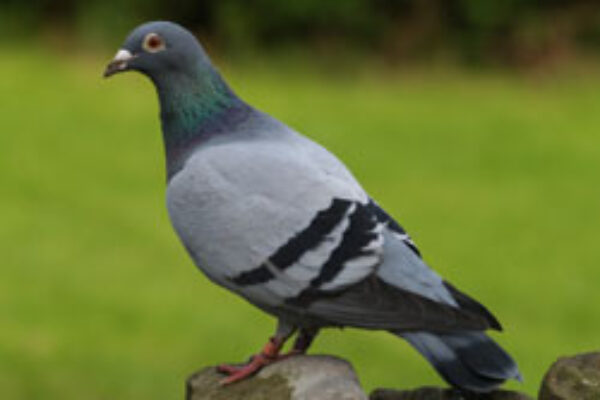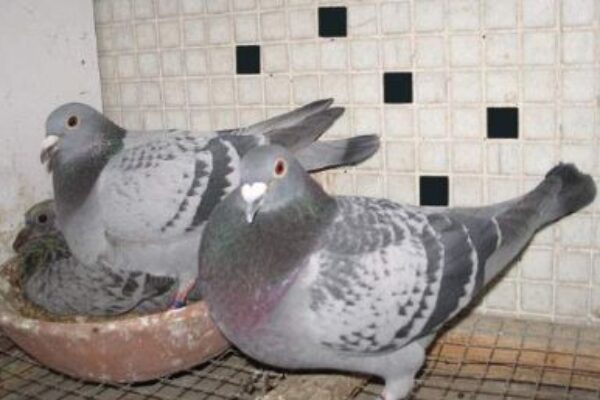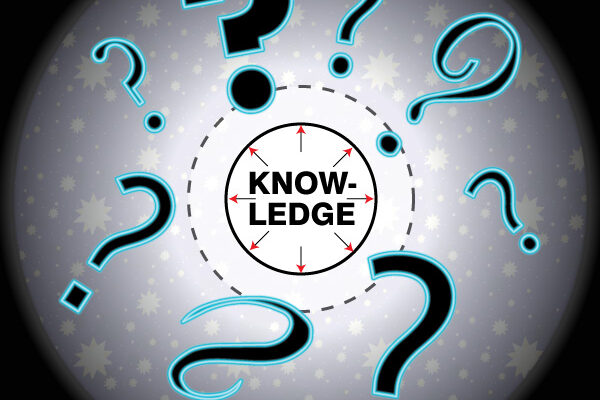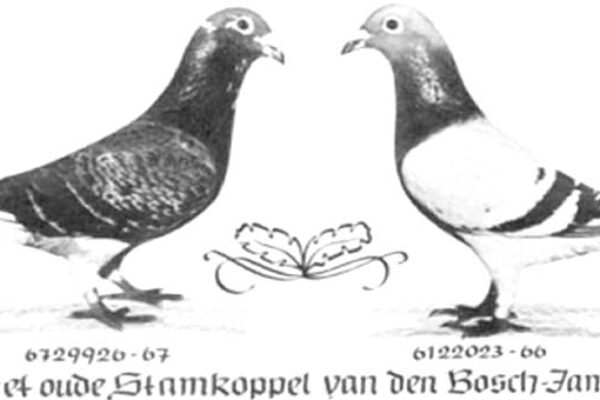Pigeon Racing and Nutrition of the Muscle Part 5
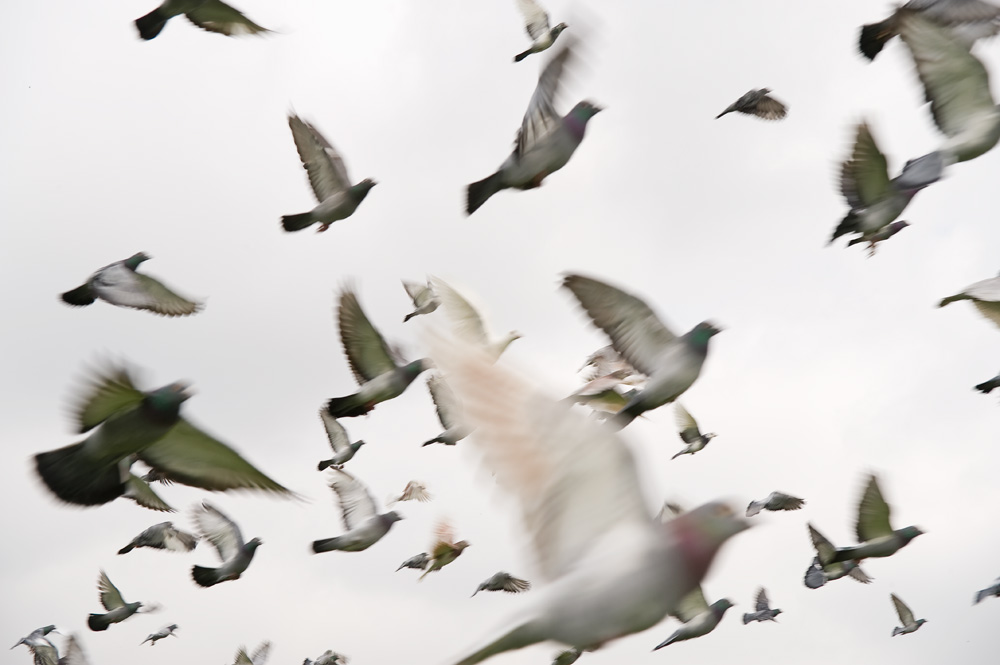 It has been shown experimentally that within minutes after release, all of the glycogen reserves in the white fibers are completely exhausted, and for all practical purposes, their activity virtually stops for the moment, as a result of this depletion of fuel. In fact, these experiments showed that glycogen stores in the white fibers are completely depleted after the first 10 minutes of effort. By the time the birds have reached cruising speed, the number of wing beats has decreased from an initial explosive rate of 9.4 to about 5.5 beats per second. The red fibers, which are now doing all of the work, continue to be loaded with glycogen ( note the important difference from the white fibers), and very significantly, with large reserves of fat, present as microscopic droplets. These fat droplets, located adjacent to the mitochondria where they are utilized, are metabolized ( or are burned chemically) in the mitochondria in the presence of oxygen, in a process known as oxidation. One important by product of the oxidation of fat is a very high energy compound called adenosine triphosphate or ATP for short, that can be likened to the steam generated by a locomotive. In one case, the steam provides the energy to drive the locomotive; comparably, the ATP produced from the burning of fat provides the energy to power the wings to beat on the average of an estimated 5.5 times per second for many hours on end during flight. Recall that at the time of liberation, the angle created by the sweep of the wings to launch the birds into the air was about 142. At cruising speed, however, this angle decreases to about 85 for the duration of the flight. For fast flight, the powerful downstroke provides both lift and strong forward propulsion, and for this reason, a powerful upstroke is not needed, and the angle formed by the sweep of the wings can be decreased to about 85.
It has been shown experimentally that within minutes after release, all of the glycogen reserves in the white fibers are completely exhausted, and for all practical purposes, their activity virtually stops for the moment, as a result of this depletion of fuel. In fact, these experiments showed that glycogen stores in the white fibers are completely depleted after the first 10 minutes of effort. By the time the birds have reached cruising speed, the number of wing beats has decreased from an initial explosive rate of 9.4 to about 5.5 beats per second. The red fibers, which are now doing all of the work, continue to be loaded with glycogen ( note the important difference from the white fibers), and very significantly, with large reserves of fat, present as microscopic droplets. These fat droplets, located adjacent to the mitochondria where they are utilized, are metabolized ( or are burned chemically) in the mitochondria in the presence of oxygen, in a process known as oxidation. One important by product of the oxidation of fat is a very high energy compound called adenosine triphosphate or ATP for short, that can be likened to the steam generated by a locomotive. In one case, the steam provides the energy to drive the locomotive; comparably, the ATP produced from the burning of fat provides the energy to power the wings to beat on the average of an estimated 5.5 times per second for many hours on end during flight. Recall that at the time of liberation, the angle created by the sweep of the wings to launch the birds into the air was about 142. At cruising speed, however, this angle decreases to about 85 for the duration of the flight. For fast flight, the powerful downstroke provides both lift and strong forward propulsion, and for this reason, a powerful upstroke is not needed, and the angle formed by the sweep of the wings can be decreased to about 85.
This efficient system operates continually over the few to many hours of the race, and provided that the muscles have been sufficiently conditioned before hand to handle the distance and the weather conditions, they operate rhythmically throughout. On this point, there is evidence to suggest that once cruising speed is reached, the wings continue to beat rhythmically and automatically by reflex action that is centered in a small area of the spinal cord. This means that the basic rhythm of the wing beat in flight likely operates automatically, without any conscious effort or will on the part of the birds. It is worth noting also that not all of the red fibers in the great pectoral muscles are likely to be working at any one time. Instead , there is evidence that they work in shifts, thus allowing some fibers to rest and replenish fuel supplies from body depots by way of the bloodstream, whereas the great majority continue working.
Recall that within 30 minutes after the birds were released, fat in the great pectoral muscles had increased in amount by up to 40% compared with the amount of fat present in the muscles of resting birds. By 2 hours after release, the amount of fat in these flight muscles has increased even more and is about 85% greater than the amount of fat in the breast muscles of resting birds. By 5 hours, the amount of fat has increased by almost 170%, over four times compared with that found in the muscles of resting birds. These findings point up once again, the very great importance of fat as a primary nutrient in fueling working muscles and the reliance placed by the bird on this key source of energy. The facts speak for themselves ! The day wears on and the hours and miles pass. The very fit birds are in front as individuals or in varying sized flocks, fat continually mobilized from the body depots and picked up by the bloodstream, to be delivered to the massive pectoral muscles which are working rapidly and efficiently. Birds that are less fit are trailing for miles behind in differing sized flocks; the hours on the wing will take their toll, and it is inevitable that some birds will not be home by dark.
- Pigeon Racing and Nutrition of the Muscle Part 1
- Pigeon Racing and Nutrition of the Muscle Part 2
- Pigeon Racing and Nutrition of the Muscle Part 3
- Pigeon Racing and Nutrition of the Muscle Part 4
- Pigeon Racing and Nutrition of the Muscle Part 5 <= you are here
- Pigeon Racing and Nutrition of the Muscle Part 6
Pigeon Racing and Nutrition of the Muscle Part 5 By: Gordon A. Chalmers DVM
The Leading Online Pigeon Racing and Racing Pigeons Magazine – The Pigeon Insider

